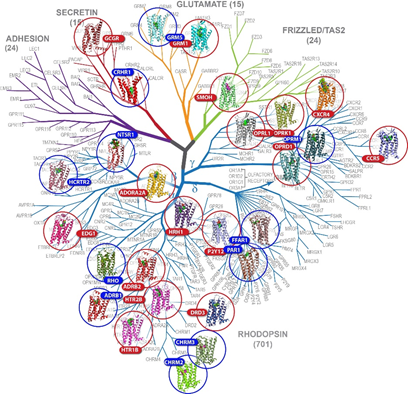

Overview
|
GPCRs comprise more than 800 receptors with common 7TM architecture and are critical for cellular signaling in CNS, cardiovascular, immune, reproductive, and most other physiological systems of the human body. More than 140 GPCRs are established as clinical targets for human diseases, including cancer and rare genetic disorders. Many other GPCRs await their detailed exploration, including “orphan” receptors, for which even knowledge of their native ligands is lacking. While the GPCR field was deprived of structural information for decades, modern GPCR crystallography has now provided a solid foundation for such computational inquiry. Three synergistic directions of research include:
|

|
|
Currently focused on adenosine, opioid, and dopamine subfamilies, we expanding our efforts to other GPCRs subfamilies involved in pain and addiction disorders, as well as those with potential applications to functional studies of brain signaling. Fundamental to these studies are active collaborations with structural and molecular biologists, medicinal and synthetic chemists, ultimately aiming at exploring new venues of structure-based drug discovery (SBDD) targeting GPCRs. |